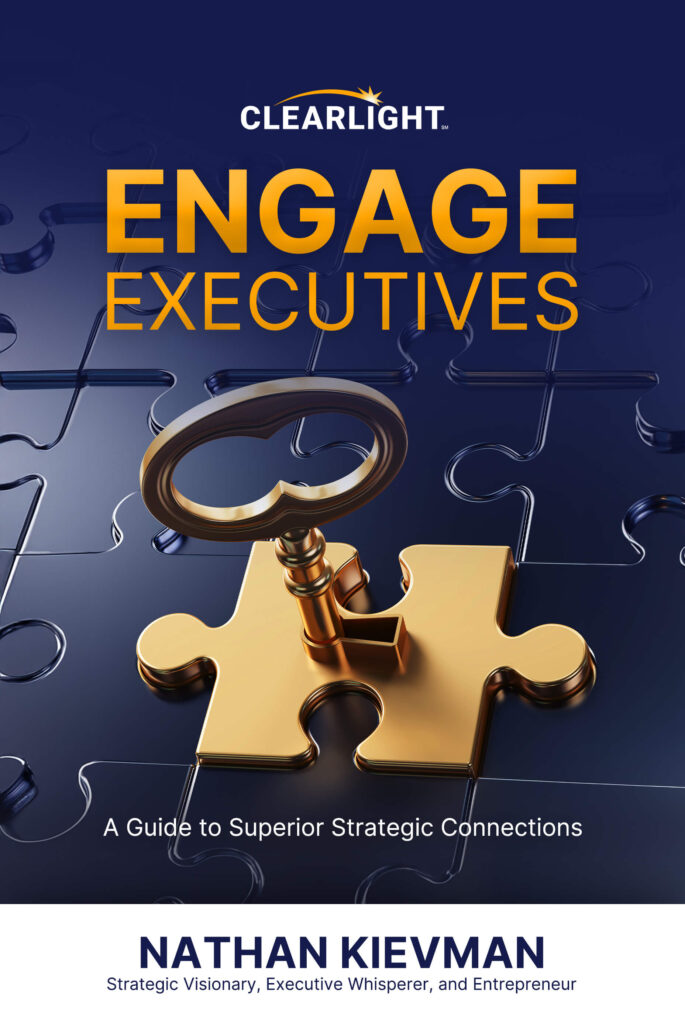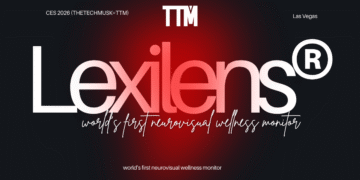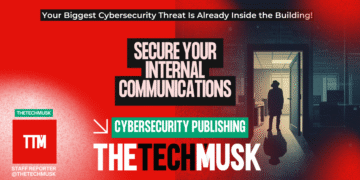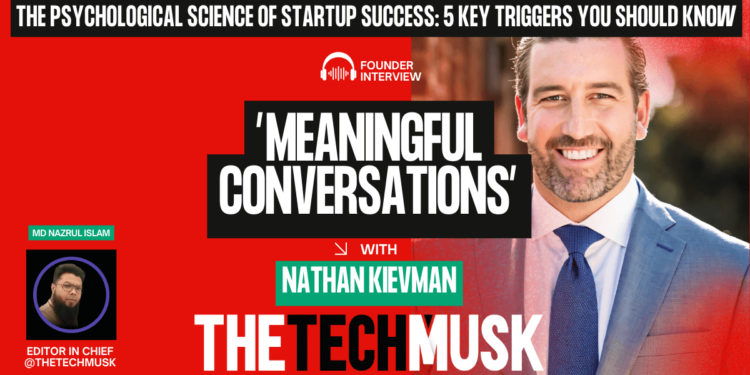After analyzing over 100,000 executive meetings, you’ve identified five psychological triggers – trust, credibility, time, money, and risk – that drive every major business decision. Yet most people get them completely backward. What critical misunderstandings about these triggers are causing even seasoned professionals to miss massive opportunities?
Great question, and it strikes at the core of why so many executive meetings don’t yield the intended results.
The five psychological triggers—trust, credibility, time, money, and risk—are foundational to executive decision-making, yet most professionals approach them in ways that unwittingly create friction or resistance. Here are the critical misunderstandings:
Trust
Many approach trust as something they can “convince” the prospect of, assuming that a laundry list of accomplishments or features will do the trick. But trust isn’t built by showing off. It’s established through relatability, empathy, and listening. Executives trust people who understand their challenges and resonate with their experiences, not those who rush to pitch.
Credibility
Professionals often try to establish credibility through reputation or technical expertise, but the most credible leaders make it clear that they understand the specifics of the executive’s industry, pain points, and unique pressures. True credibility is less about what you know and more about how effectively you can contextualize it to the executive’s world.
Time
Many pitch their product or solution as a time-saver without recognizing that executives value time differently. They prioritize initiatives that free up time for strategic, high-impact activities, not merely operational efficiencies. If the solution doesn’t clearly tie to executive-level priorities, the time savings won’t be compelling.
Money
Professionals tend to lead with the cost-savings or ROI, assuming it will be the deciding factor. However, to executives, it’s not just about savings; it’s about how the investment aligns with their broader vision and the opportunity it creates for growth. The true value of money lies in its potential to unlock greater opportunity, scalability, or competitive advantage.
Risk
Risk is often presented in binary terms, like “we’re less risky than the competition.” But executives don’t shy away from risk; they manage it. They’re looking for partners who acknowledge risks transparently, offer contingency plans and show how to turn risks into strategic advantages. Failing to address risk as a proactive, strategic tool can make even the most secure solution feel shaky.
The biggest opportunity is to reframe each of these triggers with the executive’s lens. It’s not about pitching; it’s about connecting. When done right, these triggers transform a conversation from a mere transaction into a partnership opportunity that solves problems at the highest level.

The five psychological triggers – they’re like the operating system of executive decision-making. How are you seeing executives apply these differently in today’s market compared to five years ago? What’s the evolution telling us about where business is heading?
Exactly. These triggers—trust, credibility, time, money, and risk—are the executive operating system, and over the last five years, I’ve seen a significant shift in how leaders engage with each one. It’s a real indicator of where business is heading.
Five years ago, trust was built slowly, often through established reputations and relationship-building over time. Today, executives demand trust upfront. They’re looking for immediate authenticity, openness, and alignment of values. They want to know if you genuinely understand and care about the challenges they face and if you’re willing to adapt and pivot with them. Trust is no longer earned over years—it’s expected as table stakes from the start.
Previously, credibility was tied heavily to expertise, credentials, and the prestige of past projects. Now, it’s about relevance and adaptability. Executives are drawn to partners who are nimble, data-driven, and deeply in touch with their industry’s rapid evolution. They value insights that are current and contextually relevant, not just impressive on paper. The message is clear: prove that you understand their business in today’s volatile landscape, or they’ll move on.
The pace of business has accelerated beyond what it was five years ago. Executives now view time through a different lens; they don’t just want to “save” time—they want to reallocate it for high-impact, forward-thinking initiatives. It’s about freeing up bandwidth for strategic innovation and critical relationships. The solutions that win aren’t just efficient; they empower executives to work smarter, focus on core growth areas, and get ahead of market shifts.
Cost-sensitivity has always been there, but today, it’s not just about saving money; it’s about strategic investment. Executives are viewing every dollar as a lever for growth, and they’re choosing solutions that offer scalability and competitive advantage. They’re less interested in the cheapest solution and more invested in high-ROI initiatives that position them to dominate long-term. They want partners who understand that cash flow is a strategic tool, not just a metric.
The biggest change is in how executives view risk. Previously, many tried to avoid it altogether. Now, with global volatility, risk is seen as a given—something to be managed and, in the best cases, leveraged. Executives today are more open to controlled risks if they’re attached to high reward or transformative growth. The focus has shifted to partnerships that bring risk mitigation strategies, scenario planning, and contingency frameworks rather than just offering “safe” solutions.
This evolution tells us that business is moving toward a future where agility, alignment, and strategic value are paramount. Executives are less patient with long onboarding or delayed impact. They’re leaning into partnerships that respect their time, align with their goals, and deliver immediate relevance. The companies that will thrive in this new landscape are the ones that make trust, credibility, and agility their top priorities, and that’s where we’re seeing the market heading.
Your work exposes this massive gap between how most people communicate and how executives actually process information. What are the most expensive mistakes you see people make when trying to speak ‘executive,’ and how do we fix them?
The gap is real, and it’s costing people opportunities they don’t even realize they’re missing. The most expensive mistakes I see stem from a fundamental misalignment between how people think executives want information and how executives actually process it. Here’s where things break down—and how to fix it.
Overloading with Details
Many think that more information is better, hoping to prove expertise and cover all bases. But executives process information at a high level; they need clarity, not clutter. They’re looking for distilled insights that get to the point quickly. To fix this, focus on simplicity. Lead with your main point or insight, then offer only the most relevant supporting information. If they want more, they’ll ask.
Missing the Why
Most people jump straight to the “how” and “what” of their pitch, assuming the value is obvious. But executives want to know why this matters to them. Why should they care? How does it impact their strategic goals? Without a clear connection to the executive’s agenda, you’re just background noise. Fix this by framing every point with why it’s relevant to their world and what it means for their objectives.
Ignoring the ‘Executive Filters’
Executives view information through filters of time, money, risk, trust, and credibility. If you don’t address these, you’re speaking a different language. Many pitches and presentations leave these unaddressed, hoping the value is implied. Fix it by explicitly addressing these filters early. Show them the ROI, the time saved, the risk mitigated, and how your track record and approach make you a reliable partner.
Failing to Personalize
People often present one-size-fits-all solutions, assuming their value proposition speaks for itself. But executives don’t make decisions in a vacuum—they’re unique individuals with distinct priorities and pressures. To fix this, research them personally, their organization’s challenges, and their industry trends. Tailor your approach to resonate with their specific concerns and values.
Talking at, Not with
Many people pitch or present as if they’re the only voice that matters, talking at executives rather than with them. Executives value collaboration and insights that meet them where they are. Fix this by making your pitch a two-way conversation. Ask questions, listen actively, and adapt based on their feedback. It’s about aligning, not just selling.
The fix for all these mistakes boils down to knowing your audience. Executives don’t need a full rundown—they need clarity, relevance, and alignment. Speak their language by showing you understand their world and that your solution directly impacts their objectives. It’s about making every moment of the conversation valuable to them, showing respect for their time and priorities.
In your experience with executives, you’ve seen trust make or break major deals. What are the most shocking ways you’ve watched professionals torpedo trust in the first 5 minutes, and what’s your playbook for building instant credibility?
Trust is everything with executives—it’s the foundation of any deal, and I’ve seen people completely undermine it in the first five minutes. Here are the most shocking trust-busters and a straightforward playbook to build instant credibility.
Nothing destroys trust faster than a whiff of exaggeration. I’ve seen professionals lead with inflated claims, hoping to impress, but executives have a radar for this. They know when something sounds too good to be true, and once they sense it, the credibility’s gone. Playbook Fix: Be upfront and realistic. Set clear, achievable expectations, and let your results speak. Underpromise and overdeliver—executives appreciate those who play it straight.
Jumping straight into the pitch without framing it around the executive’s unique challenges is a classic mistake. It signals that you’re more interested in your agenda than theirs, and it instantly turns them off. Playbook Fix: Do your homework. Start with a statement or insight that proves you understand their world—mention industry trends, company goals, or specific pain points. Show you’re there to solve their problems, not just sell a solution.
Some try to build credibility by dropping big client names or partnerships. But without a clear connection to the executive’s needs, it feels like an empty boast. Playbook Fix: Instead of listing clients, talk about relevant case studies or success stories. Show how you’ve solved similar challenges, focusing on outcomes and metrics that matter to the executive’s goals.
Many professionals go into a meeting with a set script, hardly pausing to listen. This is a deal-breaker. Executives want partners who can listen and adapt, not those who bulldoze through a pitch. Playbook Fix: Turn it into a conversation. Start with a question that lets them guide the discussion—something like, “What’s the biggest challenge you’re facing right now?” Listen actively, and adjust your message based on what they tell you.
I’ve seen professionals gloss over small but critical questions or concerns raised by executives, thinking they’ll come back to them later. This signals a lack of attention to detail, which is a big red flag for executives who manage high stakes. Playbook Fix: Treat every question as essential. Address it fully or let them know exactly how you’ll follow up. Executives need to feel you’re on top of every detail if they’re going to trust you with a high-stakes project.
Instant Credibility Playbook:
- Lead with Empathy – Start by showing you understand their pressures, challenges, and goals. Demonstrate that you’re tuned into their industry or company priorities.
- Highlight Results, Not Just Features – Speak to the measurable outcomes you’ve delivered, not just what you do. Show you know how to drive results in ways that align with their objectives.
- Be Transparent About Limitations – Don’t be afraid to acknowledge what you can and can’t do. Executives appreciate transparency, and this shows you’re honest and realistic.
- Listen, Then Tailor – Make it clear you’re not just there to pitch; you’re there to solve. Listen actively, adjust as you go, and make it clear the conversation is about them, not you.
- End with a Path Forward – After listening and adapting, finish with a clear, actionable path. This proves you’re organized, prepared, and committed to next steps.
Executives have a finely tuned sense for authenticity, and if you can show you’re there to deliver real value—not just a pitch—you’ll establish a foundation of trust that can carry through the entire relationship.
Let’s talk about the credibility paradox – you need proof to win trust, but need trust to get proof. How can professionals and growing companies hack this chicken-and-egg problem when approaching high-level decision makers? What unconventional approaches actually work?
The credibility paradox is real: you need proof to earn trust, but without trust, you rarely get the chance to provide proof. To break this cycle, you have to hack the traditional approach to credibility and use unconventional strategies that bypass the “prove-it” stage. Here are some methods that I’ve seen work with high-level decision-makers, even when starting from scratch:
Borrowed Credibility – If you don’t have proof yet, find someone who does and align with them. Leverage partnerships, endorsements, or even shared affiliations with known entities or respected industry figures. Executives value recommendations from trusted sources; it’s a shortcut to trust. Hack: Reference specific clients or advisors who align with the executive’s industry or business goals. Even if you’re new, this borrowed credibility gives you a foot in the door.
Lead with Industry Insights – Executives aren’t just looking for vendors; they’re looking for intelligence and partners who know their world. Instead of starting with a pitch, start by offering actionable insights on industry trends, emerging challenges, or strategic opportunities. This positions you as a thought leader who brings something valuable, even without a track record in their business. Hack: Share a tailored report or data point relevant to their unique challenges—it signals that you’re deeply invested in their success and industry.
Case Studies with Strategic Relevance – If you lack proof with high-profile clients, find case studies or scenarios that match the executive’s specific context. Describe these cases in a way that resonates with their challenges. Executives value expertise over name-dropping, so the more specific and relatable you can be, the better. Hack: Focus on explaining how you’ve solved similar issues, even on a smaller scale, and align the story directly with their goals or pain points.
Be Transparent About Your Position – Ironically, acknowledging where you’re new or scaling can build credibility. Instead of trying to look like a big player, highlight the unique advantages of your fresh perspective or agility. Executives appreciate humility and transparency, especially when paired with a solution-oriented approach. Hack: Frame your growing position as an asset: your ability to tailor, pivot, and prioritize their success in ways larger providers might not.
Pilot or Value-First Offers – If you don’t yet have the credibility to land a full contract, offer a limited pilot, workshop, or consultation to prove your value without requiring a long-term commitment. Executives like risk-free options to “test drive” new solutions before committing. Hack: Structure a small, focused project that delivers measurable results quickly. This reduces risk on their end and gives you the credibility needed to scale the relationship.
Focus on Quick Wins, Not Big Promises – Many try to establish credibility by painting a big vision, but executives have seen that before. What they want are quick wins that deliver visible, immediate impact. Start small with a specific challenge, deliver measurable results, and let that proof snowball into larger opportunities. Hack: Tailor your approach to one specific area of impact and execute flawlessly. It’s better to hit a smaller target dead-on than overpromise and miss the mark.
The trick to hacking the credibility paradox is understanding that executives don’t need a perfect record—they need a trusted relationship. Position yourself as a proactive, knowledgeable, and solution-oriented partner, and demonstrate that you’re willing to invest in their success upfront. Once they see that you understand their world and can add value immediately, the doors to larger opportunities open naturally.
You’ve mentioned executives have a completely different relationship with time than everyone else. Break this down for us – how do executives really think about time, and how should this transform the way we communicate with them?
Absolutely, time is a unique currency for executives, and they treat it with a level of precision that most people don’t realize. For them, time isn’t something to be managed—it’s a strategic resource to be optimized, protected, and leveraged. Here’s how they really think about time and how we should adapt our approach accordingly:
Every minute an executive spends on something means they’re not spending it on something else potentially more valuable. They constantly weigh the cost of their time against the potential returns of whatever’s in front of them. Our Approach: Cut to the chase. Start with the value, get to the point quickly, and eliminate anything that doesn’t directly add relevance or impact.
Executives aren’t impressed by long explanations or data dumps. They want distilled insights and clear takeaways, not a flood of information. They’re looking for substance over quantity, so every word matters. Our Approach: Communicate concisely. Boil down your message to its essence. Think in terms of the top three things they absolutely need to know—and leave out the rest.
Future-Focused Mindset –
Executives think in terms of long-term outcomes, not just immediate tasks. They evaluate every conversation, proposal, and project based on how it contributes to the bigger picture or future objectives. Our Approach: Position your message in terms of strategic impact. Connect the dots between what you’re offering and how it aligns with their long-term goals or vision. Show that you’re there to help drive the future, not just solve today’s problem.
Context-Driven Decisions –
Executives don’t have time to dig into every detail, so they rely on context. They need to understand quickly how what you’re saying fits within the larger landscape of their challenges, market shifts, or strategic priorities. Our Approach: Set the stage upfront. Start with the context they care about—industry trends, competitor moves, or internal pressures—and position your message as part of that bigger picture.
Focus on Rapid Wins –
While they’re future-focused, executives appreciate wins that move the needle today. They want solutions that deliver quick, measurable results without requiring a lot of hand-holding or long ramp-up times. Our Approach: Emphasize immediate, actionable benefits. Outline exactly how you can create value now, with clear milestones or “quick wins” that can show impact early on.
Respect for Calendar Discipline –
Executives guard their schedules like hawks; every block of time has a purpose. If they carve out time for you, it’s a high-trust move. They expect you to make it count. Our Approach: Be ruthlessly efficient with time. Stick to the agenda, address their top concerns first, and be prepared to pivot if they want to focus on something else. Show you value their time by making your meeting the most productive one they’ll have that day.
In short, communicating with executives requires a shift from “more is better” to “less is powerful.” They’re not there to be convinced—they’re there to get clarity, make decisions, and see the bigger picture. When we approach them with the same respect and precision they apply to their time, we don’t just save minutes; we show them we’re on their level, aligned with their goals, and ready to deliver immediate value.
##
About Nathan Kievman
Nathan Kievman, CEO of CLEARLIGHT and author of Engage Executives has led over 300 companies in securing over 100,000 executive meetings, resulting in over $1 billion in new revenue. CLEARLIGHT has positioned itself as a leader in B2B sales, marketing, and lead generation strategies. With deep expertise in what Kievman calls “Executive Engagement Strategy,” his firm has executed more than 80 million outbound emails and millions of cold calls, making him one of the most trusted experts in capturing executive attention and driving business opportunities.























